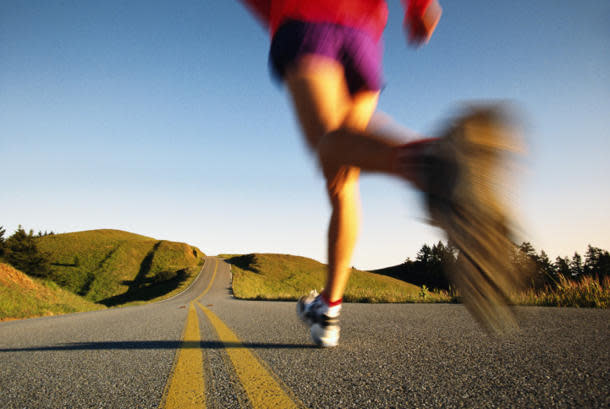 Fit to Post Health
Fit to Post HealthIf the shoes fit, wear it
By Dr Jason Chia
Do you know that it takes between 800 and 1,000 steps to run a mile for the average person? With all this impact, the running shoe is the single most important piece of equipment for a runner.
What then should you look for in a running shoe?
Size
Badly-fitted shoes can lead to blisters, corns and blackened toe-nails. Try shoes on with your running socks in the afternoon to ensure that you get a correct fit. There should be one thumb-width space between your longest toe (not necessarily the first) and the front of the toe-box when the shoe is properly laced up. If you use orthotics, allow half a size to one size additional for the extra space.
Besides the length of the shoe, note also that different models have different width. Similarly, if you have toes which are not straight, look for models with deeper toe box to avoid abrasions over the toes. Note that the actual size and the stated size can differ between models and brands.
Shoe type
Not all shoes are made equal. Racers sacrifice cushioning and support for savings in weight, while trainers are designed for the many miles incurred in training. Trail shoes are designed for greater durability and traction.
Construction
Check that the shoes have:
Heel counters
Flex at the toe box at the "knuckles of your feet" when you flex the shoes
Give resistance when you wring the shoe lengthwise
The last "outline of the sole" fits the contour of your feet
Foot type
The inner arch of the foot flattens and allows the foot to absorb the force of striking the ground. Some arches are very low or flat (over pronate), others remain high (under pronate). In general, motion control shoes gives most support (for over pronators), and neutral shoes for those in the middle.
Price
Price does not necessarily guarantee a good running experience. Conversely, there is no need to pay through the nose for the latest model.
Running style
Traditional running shoes are designed for landing on the heels. With the popularity of alternative styles of running, shoes with cushioning on the forefoot, less support or even no support are available to accommodate these running patterns.
Foot factors
Problems with the foot can also influence your shoe selection. For instance, bunions might make it necessary to choose shoes with wider toe-boxes. Those with foot problems with excessive pronation might need shoes that have more rigidity to give torsional stability.
X-factor
Above all else, the shoe must feel comfortable. Use a shoe shop with treadmill facilities that allow you to try the shoe on the spot.
The writer is a Consultant and Head of Sports Medicine And Surgery Clinic, Tan Tock Seng Hospital.


